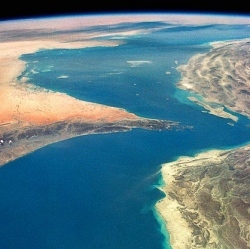
Spacex has been awarded for the development of the Raptor rocket propulsion system prototype for the Evolved Expendable Launch Vehicle program. Fiscal 2017 research, development, test and evaluation funds in the amount of $40,766,512 are being obligated at the time of award.
The Launch Systems Enterprise Directorate, Space and Missile Systems Center, Los Angeles AFB, California, is the contracting activity (FA8811-16-9-0001).
Each Raptor engine will have three times the thrust of SpaceX’s Merlin 1D engine that’s currently used in the Falcon 9.
SpaceX has conducted several dozen successful hot fires of the Raptor engine. SpaceX has completed over 1,200 seconds of firing across 42 main Raptor engine tests.
At the IAC meetings September 2017, Elon Musk announced that a smaller Raptor engine, with slightly over half as much thrust as the 2016 proposed designs, would be used on the BFR rocket than had been used on the ITS launch vehicle design unveiled a year earlier. Additionally, fewer engines would be used on each stage. BFR would have 31 Raptors on the first stage and 6 on the second stage, whereas the ITS launch vehicle design had 42 larger Raptor engines on the first stage and 9 of that same large size on the second stage.
The engines remain full-flow staged combustion cycle design using subcooled liquid-methane/liquid-oxygen propellant, just like the 2016 larger engine designs. “Version 1” of the flight engine is designed to operate at 250 bar of chamber pressure; but SpaceX expects to achieve 300 bar in later iterations. The flight engine is designed for extreme reliability, aiming to support the airline-level of safety required by the point-to-point Earth transportation market.
The sea-level model Raptor engine design, with a nozzle exit diameter of 1.3 m (4.3 ft), is expected to have 1,700 kilonewtons (380,000 lbf) thrust at sea-level with an Isp of 330 s increasing to an Isp of 356 s in the vacuum of space.[48] The vacuum model Raptor, with a nozzle exit diameter of 2.4 m (7.9 ft), is expected to exert 1,900 kN (430,000 lbf) force with an Isp of 375.
